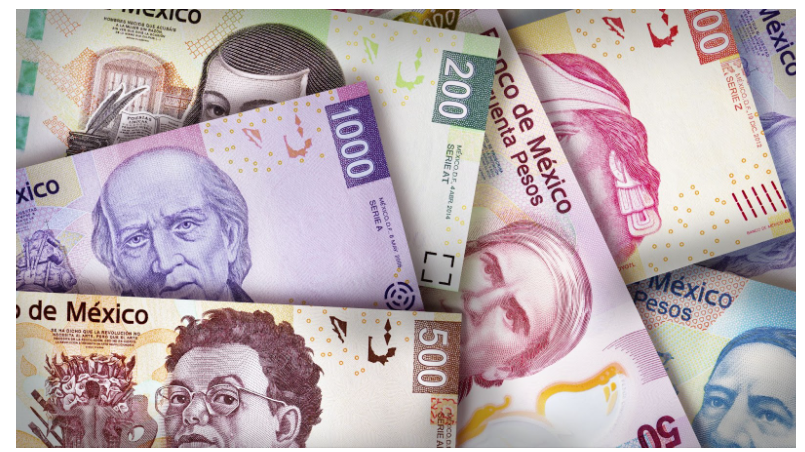Mexico is one of those places where your budget can stretch further than you expect – if you understand how the money works. From late-night tacos and coastal bus rides to museum days and rooftop dinners, the country rewards travelers who pay attention to the little things.
The Mexican Peso (MXN) might look unfamiliar at first, but once you learn the rhythm of the prices, everything becomes surprisingly straightforward. A few smart choices can help you enjoy more of the country without overspending or falling for the common “tourist traps” built around confusion.
Get Comfortable with the Peso
If you’re new to Mexico, the numbers might catch you off guard. Street snacks at $20 MXN, lunch for $120 MXN, a taxi that costs $80 MXN – it looks high until you remember that $1 USD is roughly $18-$20 MXN depending on the moment.
Most of the time, you’ll deal with:
- Coins: $1, $2, $5, $10
- Bills: $20, $50, $100, $200, $500, $1,000
The $100 and $200 notes will be your daily workhorses. $500 bills are common from ATMs, but smaller shops often hesitate to break them, so try to keep change on hand.
Before arriving, it’s smart to exchange Mexican Pesos in advance if you can – airport booths are convenient, but they almost always take a little extra on the rate. If you wait until you land, use an ATM from a major bank rather than a stand-alone machine.
Cash is still very important in Mexico. Even though big cities use cards freely, smaller towns, beach stalls, family-run cafés, and colectivos (shared vans) prefer cash every time.
What a Day in Mexico Really Costs
Your budget in Mexico doesn’t depend on where you are as much as how you travel. The difference between eating like locals and eating like tourists is huge.
Budget travelers ($600-$900 MXN / $35-$55):
Hostels, street food, local buses, and simple activities keep costs low. Taco stands and comida corrida (set-menu lunches) are the best value around $70-$120 MXN.
Mid-range travelers ($1,200-$2,000 MXN / $70-$120):
Expect boutique hotels, a mix of cafés and sit-down restaurants, intercity buses, and paid attractions like cenotes, ruins, or museums.
Luxury travelers ($2,500+ MXN / $150+):
High-end beach stays, private tours, fine dining, and curated experiences are widely available – especially in places like Los Cabos, Tulum, and Mexico City’s Polanco.
Most visitors land comfortably in the mid-range. Mexico is affordable compared to many destinations, and you can upgrade your experience without stretching your budget too far.
How Mexico Eats Your Money, and When It’s Worth It
Food is where Mexico quietly spoils you. Street tacos for $20–$30 MXN each, fresh fruit cups for $30 MXN, tamales for $18 MXN – you can eat well and cheaply almost anywhere.
But there are areas where the prices jump:
- Coffee shops and trendy cafés: Expect $50–$90 MXN for a latte, especially in Mexico City’s Roma Norte or Oaxaca’s centro.
- Sit-down meals: A simple lunch runs $120–$180 MXN, while dinners with drinks can reach $250–$400 MXN.
- Tourist zones: Beach towns like Tulum or Isla Mujeres can charge double or triple for the same food you’d find inland for half the price.
Sometimes the splurge is worth it – rooftop dinners in CDMX, beachfront seafood in Puerto Vallarta, or mezcal tastings in Oaxaca all offer genuinely special experiences.
Accommodation follows the same pattern:
- Hostels: $200-$400 MXN per night
- Mid-range hotels: $800-$1,500 MXN
- Beach resorts or boutique stays: $2,000-$4,000+ MXN
Clean, well-located places exist in every price range – you just need to pick the right neighborhood.
Cash, Card, or Something in Between?
Mexico is a mix of old habits and new systems. You can pay with Visa or Mastercard in most hotels, restaurants, and supermarkets. Apple Pay and contactless cards are increasingly common too.
But always carry a cushion of cash – around $300-$600 MXN.
You’ll need it for:
- Street food
- Local markets
- Small buses and colectivos
- Corner stores
- Tipping drivers or guides
ATMs from major banks (BBVA, Santander, HSBC, Banorte) tend to have better fees and clear instructions. Avoid random standalone ATMs, especially in touristy areas – they often add hidden charges.
When withdrawing, always choose to be charged in MXN. Selecting your home currency almost guarantees a worse exchange rate.
Getting Around Without Overspending
Mexico’s transportation varies by region, but it’s almost always affordable if you avoid tourist-only shuttles.
- City buses or metro: $6-$10 MXN in Mexico City or Guadalajara.
- Taxis: Usually fair but always ask the price before you get in unless it’s a metered cab.
- Rideshare apps: Uber and Didi are widely used and often cheaper than taxis.
- Intercity buses: Comfortable and reliable, usually $300-$700 MXN depending on distance.
In beach towns, colectivos are your best friend – they run fixed routes, cost a fraction of taxis, and are safe and popular with locals.
Local Habits
Mexicans are practical with their spending, and you’ll notice a few habits that stretch their pesos further:
- Eat where locals eat. Markets and neighborhood diners offer some of the best meals for $80–$120 MXN.
- Use purified water refills. Buying big bottles or refilling saves money quickly.
- Buy snacks at OXXO or local shops. Beachfront vendors have convenience, but they price accordingly.
- Avoid “tourist menus.” They’re often more expensive and not nearly as good as the regular menu.
- Walk when you can. Most city centers are safe during the day and very walkable.
These choices don’t make your trip feel “cheap.” They make it feel local.
Cultural Notes and Tipping
In Mexico, tipping is customary – not mandatory, but widely appreciated. For restaurants, 10-15% is common, and for quick service or street food, leaving your change is enough.
If you’re paying in cash at a restaurant, be clear whether the bill includes service before adding more. Some tourist areas automatically add it.
Handing money with one hand is completely normal (there’s no formality about using both), but politeness still goes a long way: a simple “gracias” or “buen día” always lands well.
Final Thoughts
Mexico doesn’t require a big budget to feel rich. You can spend an afternoon wandering colonial plazas for free, enjoy incredible meals for a few dollars, and take cross-country rides without draining your wallet.
Spending smart here isn’t about cutting corners actually, but about understanding how the country moves, eats, and lives. Once you learn the rhythm of the peso, Mexico opens up in a way that’s generous, colorful, and always worth exploring.
Read More From Techbullion



































